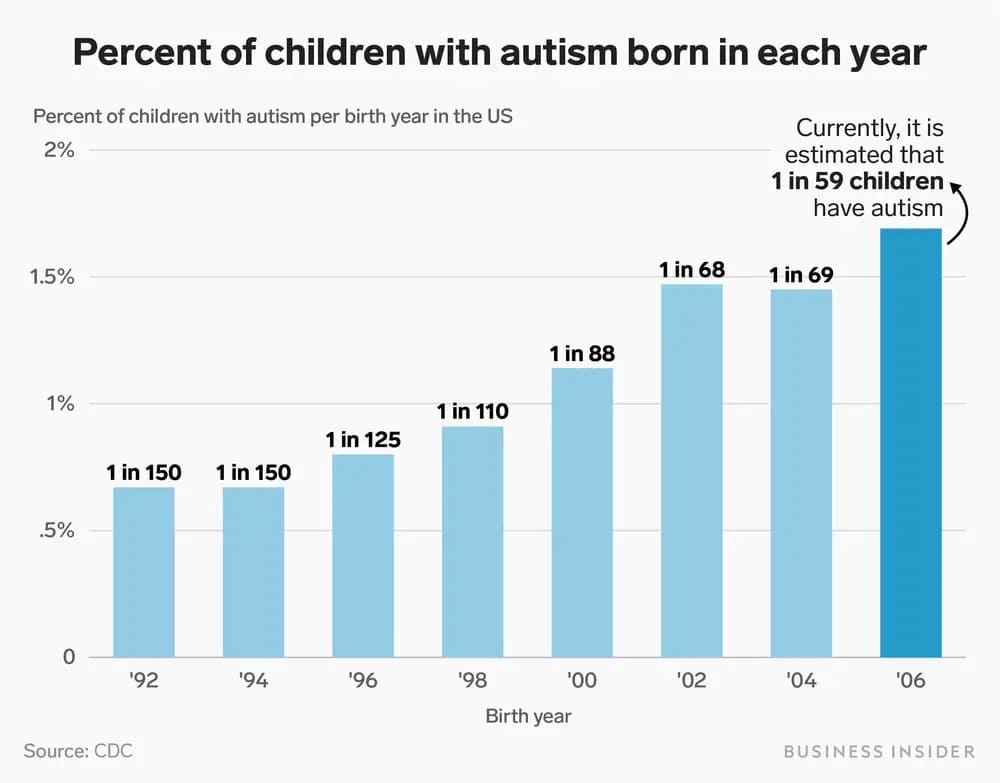Autism Assessment Test
3 Min Free Autism Assessment Test
Who Can Benefit From This Autism Assessment Test?
An autism assessment test can be beneficial for individuals who suspect they may have autism or have been referred for assessment by a healthcare professional, educator, or employer. It can also be useful for family members or caregivers of individuals with autism who are seeking information or support. The assessment can help individuals and their loved ones better understand their symptoms, strengths, and challenges and make informed decisions about treatment and support. It can also be helpful for healthcare professionals in making a diagnosis and developing an individualized treatment plan.

Autism Assessment Test Accuracy

The accuracy of an autism assessment test can vary depending on several factors, including the type of test, the experience and qualifications of the person administering the test, and the individual being assessed.
However, it’s important to note that no test is 100% accurate, and a diagnosis of autism should not be based on a single assessment. A comprehensive evaluation that includes input from multiple sources, such as parents, teachers, and healthcare professionals, is recommended.
It’s also important to consider that some individuals with autism may have unique or atypical symptoms that may not be fully captured by standardized tests. Therefore, it’s important for healthcare professionals to use their clinical judgment and consider all available information when making a diagnosis.
Types of Autism Assessment Test
Diagnostic interview:
This type of assessment involves a structured interview with the individual being evaluated and their family members or caregivers. The Autism Diagnostic Interview-Revised (ADI-R) is a commonly used diagnostic interview for autism.
Observational assessment:
Observational assessments involve observing the individual in various settings to evaluate their behavior and social interaction. The Autism Diagnostic Observation Schedule (ADOS) is a commonly used observational assessment for autism.
Developmental assessments:
These assessments evaluate a child’s development across multiple domains, including language, motor skills, and cognitive abilities. The Mullen Scales of Early Learning and the Bayley Scales of Infant and Toddler Development are examples of developmental assessments.
Screening tools:
Screening tools are brief assessments that are used to identify individuals who may be at risk for autism. Examples of screening tools include the Modified Checklist for Autism in Toddlers (M-CHAT) and the Social Communication Questionnaire (SCQ).
Cognitive and IQ tests:
These tests evaluate an individual’s cognitive abilities and intelligence. The Wechsler Intelligence Scale for Children (WISC) and the Stanford-Binet Intelligence Scale are examples of cognitive and IQ tests.
Adaptive behavior assessments:
These assessments evaluate an individual’s ability to function in daily life, including their communication, self-care, and social skills. The Vineland Adaptive Behavior Scales and the Adaptive Behavior Assessment System are examples of adaptive behavior assessments
Treating Autism
The treatment of autism typically involves a combination of different therapies and interventions that are tailored to the individual’s specific needs and symptoms. Here are some common treatments for autism:
- Behavioral therapy: Behavioral therapies, such as Applied Behavior Analysis (ABA), focus on teaching individuals with autism new skills and behaviors, and reducing problem behaviors.
- Speech therapy: Speech therapy can help individuals with autism improve their communication skills, including language development, social communication, and nonverbal communication.
- Occupational therapy: Occupational therapy can help individuals with autism improve their motor skills, sensory processing, and daily living skills.
- Medications: Medications may be used to treat specific symptoms of autism, such as anxiety, depression, or hyperactivity. However, medications should be used with caution and under the guidance of a healthcare professional.
- Assistive technology: Assistive technology, such as communication devices or sensory tools, can help individuals with autism communicate and interact with the world around them.
- Parent training and support: Parent training and support can help parents and caregivers learn strategies for managing behavior, promoting communication and social skills, and accessing resources and services.

